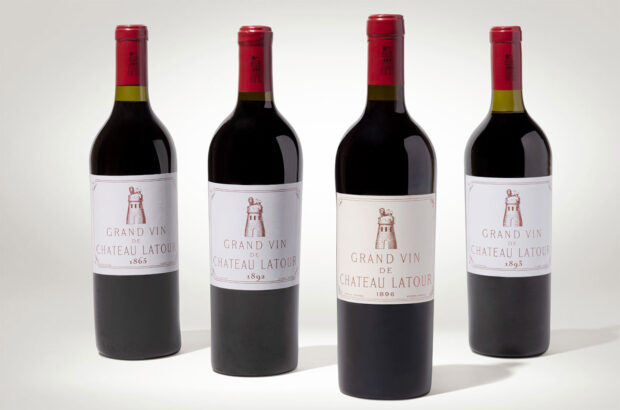They say that necessity is the mother of invention, and in the rum world this sentiment couldn’t ring truer than in the case of rhum agricole. A lesser-known style than its molasses counterpart, agricole – translated as ‘agricultural’ and made from pure sugar-cane juice – came to prominence at the end of the 19th century, when global sugar prices dropped, threatening the economies of French island colonies in the Caribbean, leading to sugar-cane juice being distilled into rum.
Today, the islands of Martinique (which has its own AP), and Basse-Terre, Grande-Terre and Marie-Galante in Guadeloupe (which holds a GI) are all known for rhum agricole production, in which sugar cane is crushed and its juice (vesou) fermented, distilled and sometimes aged.
But sugar-cane juice rum isn’t restricted to the French Caribbean – from Grenada and the Seychelles to Hawaii and Florida, distillers are increasingly working with locally grown sugar cane to make these exceptionally distinctive styles of rum. Not to mention clairin from Haiti and cachaça from Brazil, which are also rums made from sugar-cane juice.
So, why does this style of rum have such an allure? And, most importantly, how can you drink them?
Navigating nuance
‘Agricole is funky, bright and complex in flavour,’ explains Chloe Rose of Call Me AL bar in the northwest of Hong Kong island, previously also of rum-focused The Lobo in Sydney.
One of the brands best known for showcasing the range of flavours achievable in agricole rums is Rhum JM. Located on the northern tip of Martinique at the foot of the infamous Mount Pelée volcano, the producer grows its own sugar cane on half of its 300ha estate. Harvested between February and June, the sugar cane is crushed within an hour of harvest, distilled in two vast column stills and either left unaged or transferred into ex-bourbon, American oak or French oak barrels.
It’s the favourite agricole of Drew Fleming, award-winning bartender and co-founder of the Isle of Man’s Kiki Lounge. ‘Tasting their full range from start to finish is such a journey,’ he says. ‘Particularly their more obscure bottlings; the sugar cane for their Fumée Volcanique bottling is grown in super-volcanic soil. As you’d expect it’s smoky, but it retains the freshness and zip that makes agricole so fun to work with.’

From left: Drew Fleming with Jamie Lewis, Kiki Lounge
Place & taste
Agricole rums are also heralded for their ability to express the terroir in which their sugar cane is grown. ‘What agricultural rum enthusiasts generally love is its incomparable richness, complexity and aromatic diversity,’ explains François Le Grelle of Martinique’s Baie des Trésors. ‘Only the distillation of pure cane juice can extract and concentrate all these flavours. [It is] to rum what single malt is to whisky.’
This distillery makes rums centred on terroir using sugar cane grown not far from Baie du Trésor and the Caravelle peninsula on the Galion Agricultural Estate, which dates back to 1849. ‘Each plot is like a vineyard for fine wines, with no blending between plots or even between years,’ Le Grelle says. ‘After several years of production, we can very distinctly recognise the “DNA” of each plot.’

Renegade Rum’s Dunfermline estate is
the furthest inland of its 14 farm sites
Over in Grenada, Renegade Rum Distillery diligently celebrates the individuality of its volcanic and alluvial terroirs in its rums (which it refers to as cane rum, not ‘agricole’), where cane from single terroirs is harvested and distilled to showcase its distinctive flavours. Rhum Clément in Martinique, meanwhile, uses a single cane variety, canne bleue, to make a rum that features floral and citrussy notes alongside those more typically associated with agricoles, such as grass and freshly cut sugar cane.
In the Seychelles, Takamaka works with local sugar cane grown in granitic soil and beach sand, which emphasises the herbaceousness in the rums produced. ‘The cane we use in our distillery has distinct terroir notes as a result of the particular soil and land type found in the Seychelles,’ says master blender Steven Rioux. ‘The green juice is rich with notes of raw sugar, floral grassiness and the essence of the sun baked soil.’

Crushing the cane at Takamaka
If you’re drinking this style of rum for the first time, be prepared to leave any preconceptions based on other styles of rum at the door.
If you want to taste them neat (many sugar-cane rums make excellent sippers), then Kiki Lounge’s Fleming has a handy tip: ‘Buy two different bottles. This way you can start to build your knowledge through the medium of comparing and contrasting.’ And if your home cocktail skills are well honed, he also suggests mixing the rum in a Daiquiri before experimenting further, in order to see how it plays with the basic building blocks of any cocktail: acid and sugar.
For Call Me AL’s Rose, drinking these rums unaged really allows their character to shine. ‘For me, this minimal interaction with the production is an amazing representation of terroir in spirits, creating something funky, interesting and fun.’ Keeping it simple, she says, is also key in, say, a Ti’ Punch (Martinique’s national drink, a mixture of rhum agricole, lime juice and cane syrup), ‘a Daiquiri or just a banging rum highball’.
Discover sugar-cane juice rums: Five to try
Baie des Trésors Fruits des Pluies
Martinique
Made using sugar cane that’s exposed to plenty of rainfall on high ground in Dufferet, this expression has been aged for a few months in French oak barrels. Lots of candied fruits and bright florals on the nose, with liquorice, dark chocolate and more earthy tones becoming vivid on the palate. Would work brilliantly in a riff on an Espresso Martini. Alcohol 50%
Paranubes Caña Morada
Mexico
This overproof white rum from Mexico uses a single sugar cane variety, Morada. It’s a really rather special rum that has been fermented in pine vats. It’s made in the Sierra Mazateca in Oaxaca, in a small mountain village called Rio Tuerto. Lots of grass and savoury vegetal notes are matched with bright citrus and grounded with an earthiness, no doubt thanks to its terroir. Alc 54.5%
Renegade Pre-Cask Dunfermline Column Still
Grenada
This is one of my favourite sugar-cane juice rums – bursting with citrus peel and a sweet florality on the nose before plunging into much more savoury and spicy notes on the palate. Made using the 2020 harvest of Lacalome red sugar cane and named after a lost distillery on the land where it grows (a terroir called Mango Lane), this rum has been distilled using column stills (they do the same using pot stills, so you can taste the difference). Alc 50%
Rhum JM VSOP
Martinique
One of Rhum JM’s old premium rums, this expression has been aged in ex-bourbon barrels for three years, before finishing in new American oak casks. Grassier agricole notes are complemented by rich toffee and vanilla hints, before moving into warming baking spices and a rich, buttery finish. The perfect sipper. Alc 43%
Takamaka Le Clos Napa Laz
Seychelles
The latest release from Takamaka’s exclusive Le Clos range, Napa Laz combines the 2022 and 2023 harvests of local sugar cane for this very special blend of unaged rums. There’s the expected cut-grass note, which is ramped up with hints of green peppercorns before moving into subtle citrus. A mineral backbone gives this rum its surprise factor. Alc 53.4%






